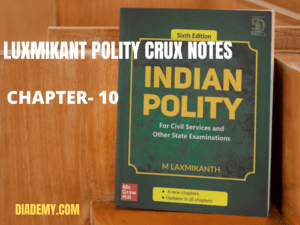
| Procedure for Amendment | 1. Amendment allows the constitution to adjust to society as it changes.
2. Article 368 (Part XX) – Power of the Parliament to amend the constitution and procedure therefore. Ø Parliament can add, change or repeat any provision of the Constitution in accordance with the procedure. Ø SC in Keshvananda Bharti case (1973): Parliament cannot amend the basic structure of the constitution 3. Procedure under Article 368. Ø For an amendment, a bill needs to be initiated in either House of the Parliament. Ø Cannot be initiated in a state legislature. Ø Does not require prior permission of the President. Ø Both private members and minister can initiate a CA bill. Ø Should pass in each house with a special majority. Ø More than 50% of all members and more than 2/3 of those present and voting. 4. Types of Amendments under Article 368: Ø Parliament has to power to take abridge/ take away FRs. Ø Parliament can amend in 2 ways: a. By a special majority of Parliament b. Ratification of half of the states by simple majority of the Parliament (present and voting) |
| 1973:Kesavananda Bharati case | 1. SC overruled its Golaknath judgement
2. Uphold 24th CA: Parliament can abridge FRs. 3. Created the doctrine of ‘basic structure’/ ‘basic features’. 4. Did not define the doctrine nor listed the basic structure. 5. Parliament cannot alter this basic structure under Article 368.
Parliament’s reaction to the Judgment- 42nd CA 1976 a. Amended Article 368: there is no limitation on the constituent power of the Parliament to amend the constitution. b. Amendments cannot be judicially reviewed. |
| 1980: Minerva Mills case, SC said | 1. Judicial review is a basic feature of the constitution & the Parliament cannot abridge
2. Parliament has a limited power toamend the constitution. 3. It cannot use these limited powers to give itself unlimited powers. |
| In 1981: Waman Rao case, SC said | The basic structure doctrine to apply to all CAs exacted after the 24th April 1973, i.e. after the Keshvananda Bharati Judgement. |
| What is the basic structure doctrine? | · The doctrine forms the basis of a limited power of the SC to review and strike down Constitutional amendments exacted by the Parliament which conflict with or seek to alter this “basic structure” of the Constitution.
· The basic structure applies only to CAs, not to ordinary Acts of Parliament. · Although Keshvananda was decided by a narrow margin of 7-6, the basic structure doctrine has since gained widespread acceptance and legitimacy due to subsequent cases and judgements. |
| Bill of CA | Parl., either temporary or permanent members (Permission of POI not requirement) |
| Amendment of the Constitution | The Constitution can be amended in three ways:
a. Amendment by simple majority of the Parliament, b. Amendment by special majority of the Parliament, and c. Amendment by special majority of the Parliament and the ratification of half of the state legislatures. |
| By Simple Majority of Parliament | · President bound to give assent
1. Not withhold 2. Cannot send back for reconsideration · For: a. Establishment of New state, alteration, name b. Abolition of Legislative Councils in states or addition c. Citizenship (acquisition and termination) d. Quorum, salaries, Privileges, Rule of procedure, English language in Parliament, Elections of MLA e. Second, Fifth and Sixth Schedule Amendment f. No. of Judge in SC, Delimitation, UT, citizen g. Use of official Language etc. |
| By Special Majority of Parliament | · By Special Majority [2/3rd {P+V} should more or equal to 50% of strength]
· For: a. FRs, DPSP, b. all other provision not in 1st& 3rd Schedule. |
| By Special Majority and Consent of half of state | · Related to the federal structure of the polity
· No time limit within which the states should give their consent to the bill · For: a. Election of the President b. Extent of the executive power c. SC & HC, 7th schedule d. Distribution of Legislative power b/w Union & state e. GST Council f. Representation of states in Parliament g. Power of Parliament to amend and its procedure (Art 368 itself) |
Get all essential Crux notes by clicking here https://diademy.com/product/staticcrux/